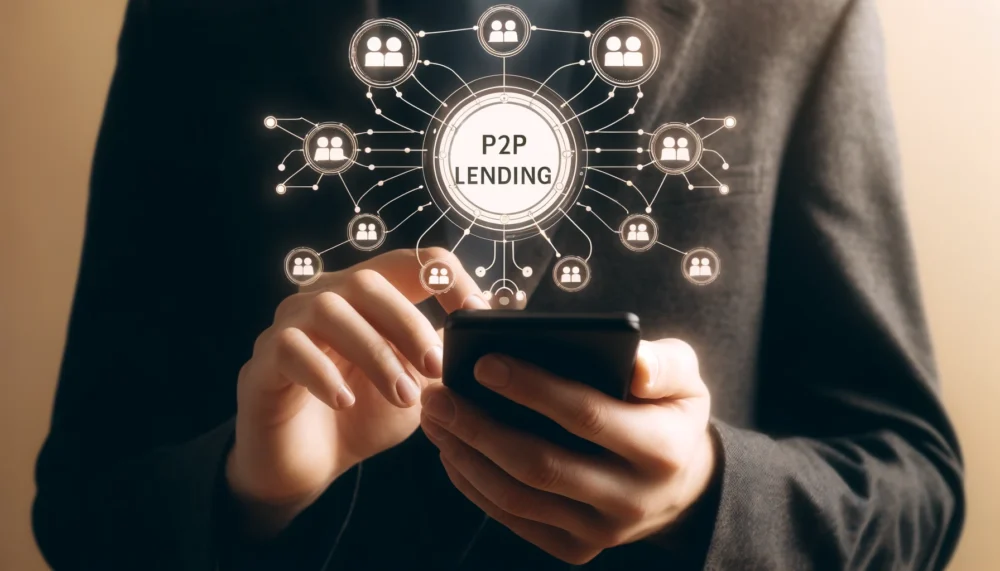In the landscape of finance, Peer-to-Peer (P2P) lending has emerged as a transformative force, revolutionizing the way individuals and businesses access funding. This innovative model, often facilitated by online platforms, connects borrowers directly with lenders, bypassing traditional financial institutions. The history of P2P lending is a fascinating journey that reflects the evolution of finance and technology around the world.
Origins: Pioneering the P2P Landscape
P2P lending traces its roots back to the early 2000s when platforms like Zopa, Prosper, and LendingClub pioneered the concept. At a time when traditional banking systems were often cumbersome and slow to provide loans, these platforms aimed to disrupt the status quo by creating an online marketplace where individuals could lend money directly to peers in need of financing.
Initially, P2P lending platforms primarily focused on personal loans, offering borrowers an alternative to banks with potentially lower interest rates and streamlined application processes. This approach resonated with both borrowers, who sought more accessible financing options, and investors, who were attracted to the prospect of earning higher returns compared to traditional savings accounts.
Expansion in the United States and Europe: Paving the Way for Growth
Throughout the mid-2000s, P2P lending experienced significant growth and adoption in the United States and Europe. LendingClub and Prosper emerged as household names in the U.S., while Zopa spearheaded the movement in the United Kingdom. These platforms leveraged technology to assess credit risk, match borrowers with suitable lenders, and facilitate loan transactions efficiently.
In addition to offering an alternative source of financing, P2P lending platforms provided investors with an opportunity to diversify their portfolios and earn attractive returns. As a result, the industry gained momentum, attracting both borrowers and investors seeking greater flexibility and transparency in the lending process.
Regulatory Challenges: Navigating the Regulatory Landscape
As P2P lending gained popularity, regulators grappled with how to classify and oversee these platforms effectively. In the United States, the Securities and Exchange Commission (SEC) and state regulators introduced regulations to protect investors and ensure compliance with securities laws. Similarly, European countries implemented regulatory frameworks to safeguard the interests of both borrowers and lenders while fostering innovation in the financial sector.
While regulatory compliance posed challenges for P2P lending platforms, it also helped legitimize the industry and build trust among stakeholders. By adhering to regulatory standards and implementing robust risk management practices, P2P lending platforms demonstrated their commitment to transparency and accountability.
Global Expansion and Diversification: Bridging Borders and Industries
Over the past decade, P2P lending has transcended borders, spreading to regions like Asia, Africa, and beyond. Countries such as China, India, and Kenya have witnessed the proliferation of P2P lending platforms, catering to the unique financial needs of their populations.
In addition to personal loans, P2P lending platforms now offer a diverse range of products, including business loans, real estate financing, and invoice financing. This diversification has expanded the reach of P2P lending, catering to a broader spectrum of borrower profiles and investment preferences.
Looking Ahead: Embracing Innovation and Collaboration
As P2P lending continues to evolve, innovation and collaboration will remain key drivers of growth. Technological advancements such as data analytics, artificial intelligence, and blockchain technology will further enhance the efficiency and security of P2P lending platforms, while partnerships with traditional financial institutions will facilitate greater access to capital for borrowers.
In conclusion, the history of P2P lending is a testament to the power of innovation and entrepreneurship in reshaping the financial landscape. From its humble beginnings to its global impact, P2P lending has empowered millions of individuals and businesses to access capital and achieve their financial goals. As we look to the future, P2P lending stands poised to drive further democratization of finance, foster economic inclusion, and unlock new opportunities for growth and prosperity around the world.








